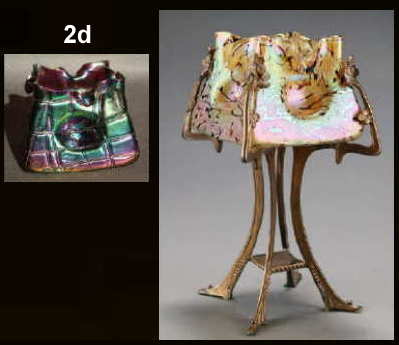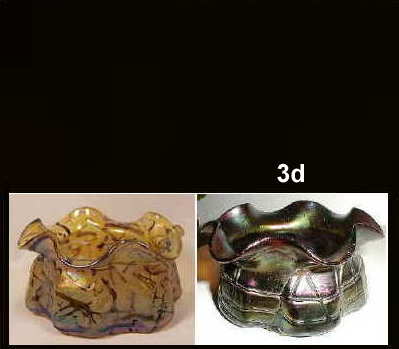Visual Archeology
by Alfredo Villanueva-Collado


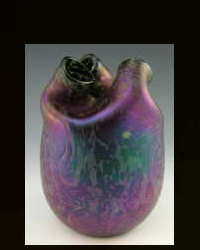
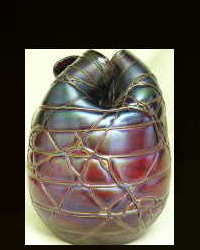
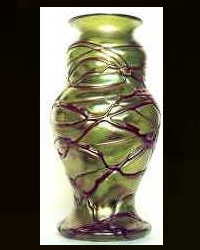
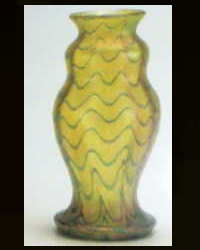
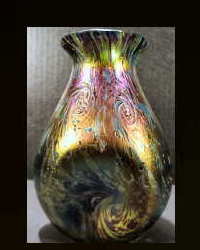

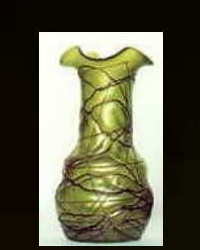
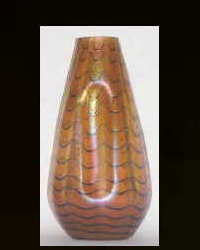
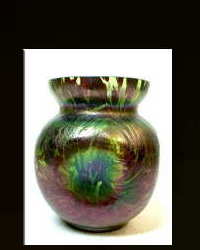
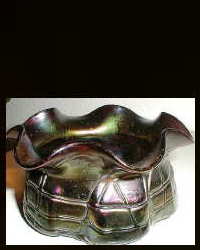
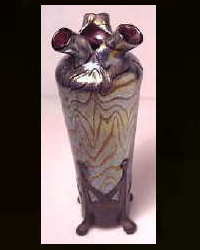
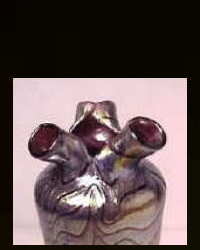
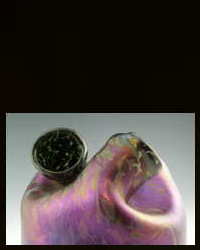
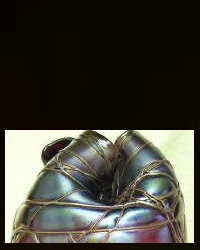
Detail of Images above:
First row: Four cardiac vases in different decors. (1a,1b,1c,1d)
Second row: Two known Kralik shapes and decors; a vase in green swirl ; a documented Kralik shape in opaque red threaded glass (see image below). (2a,2b,2c,2d)
Third row: A Kralik shape in threaded green; a vase with decoration identical to second cardiac vase in a known Kralik decor and shape; another green swirl vase; another documented Kralik shape in opaque red threaded glass (see image below). (3a,3b,3c,3d)
Fourth row: A Silberband with the three-valve neck turned outwards; detail from Silberband; detail from the third cardiac vase (1c); Detail from the fourth cardiac vase (1d). (4a,4b,4c,4d)
VISUAL ARCHEOLOGY: CARDIAC VASES
Given the unspoken but real incestuous relationship both between Czech manufacturers and between Czech manufacturers and their foreign competitors, and the absence of pertinent documentation, the degree of similarity among vessels from different companies may be difficult to detect. But a trained eye can spot them in the end.
Cardiac vases are widely coveted for their allusive shape, particularly the three-valve sheared and shaped top. The most frequently found vases, be they in transparent green or oxblood red, have applied veining reminiscent of Pallme Koenig and have been routinely ascribed to this company.
However, there have appeared other cardiac vases without veining, in decors not associated with Pallme-Koenig. Veining by itself does not constitute a PK marker, since all of the major companies used this type of decor in varying degrees of thickness and application techniques.
Thus, I decided to apply a methodology I have called "Visual Archeology", which is based on several simple premises:
1) Identical shapes mean the same manufacturer. Each manufacturer had a stock of shapes that constitute "markers", that is, that identify the manufacturer.
2) Vases in the same shape and different décor mean those décors were used by the same manufacturer. Some decors are "markers", identified with only one manufacturer. Others are not, threading among them (Papillon, crackle, rigaree come to mind)
3) Modus operandi: starting from one shape, several decors, add vases that match either one. Then, compare with the perceived manufacturer's production. If it does not match, the attribution cannot be established.
In PK's case, the decors are pretty well established, thanks to the PMC IV. At times, there appear new decors, identified by the recognizable shape. In the case of the cardiac vases, the decors most closely resemble Kralik. It is worth noticing that the PMC IV has at least one cardiac vase, and other vases whose decors correspond to cardiac vases, as "Unknown production" (see pages 409-410). I myself, in the article I wrote for Loetz.com on PK, mistakenly classified up to four green veined pieces, including a cardiac vase, as PK because of their striking similarity, a mistake I am now trying to rectify (until the next round of attributions).
And then, there is the matter of a purple Silberband which recently showed up with what is basically a variation of the three-valve sheared neck turned outwards, not inwards. This evidence links the cardiac vases to a whole different glass line by the same manufacturer: Kralik.
Below: Images 2d and 3d from the array above shown with linking pieces in Kralik's Bacillus decor.
